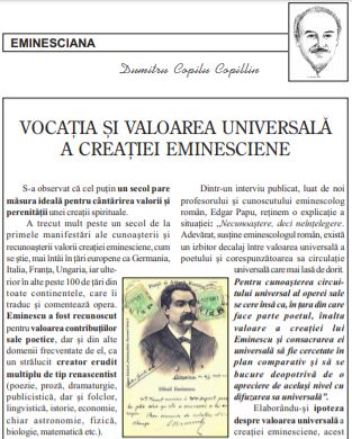This is the reposting of messages from ''60mmtelescopeclub'' Yahoo group regarding a 60x500mm refractor built around a Swift 818 lens :
June 1 , 2019
A while back Carol was so
kind and donated to me a Swift 818 objective with an aperture of 60mm and 500mm
focal length.
First I got a Celestron focuser for it ,it is plastic but don't wobble
much.
The weak part is not the rack and pinion but the bushing where one
insert the eyepiece.
I will change that one with a metal bushing because it could be
unscrewed.
Next I got from a friend a very fine aluminium tube which was part of an
English spotting scope.
A machinist made two adapters ,one for the threaded cell and the
other for the focuser.
The outside diameter of the tube is 67mm.
Using two ''C'' shims or segments cut from plastic 3'' drain pipes
is allowing to use my home-made clamshell for refractors with 3'' tubes.
I arrived to this stage last year but while checking on the sky I found
myself with an issue.
The ergonomy of the telescope was not good because a finder was missing.
Balancing reasons are requesting the tube to be pushed upside so the
focuser is next to clamshell ,no place for a finder.
One solution could be to put a finder close to the objective.
A simulation showed this well not work well.
I bought a bracket for an RDF but this cannot be monunted on a tube of
such small diameter.
I found myself stuck.
One morning ,this week ,I waked up with a solution in my mind.
All I had to do was a wooden adapter between the tube and the bracket of
the RDF.
Thursday I made the bracket.
I'm not very happy with it ,it is a bit slant but it allow the RDF to be
colimated paralel with the telescope using the image of a distant chimney.
Today,with help from my Guardian Angel , I was allowed to see Arcturus
through the clouds.
I pointed the telescope using the RDF and Arcturus was shining at 20x ,a
bright,gold pin point amidst thick clouds.
Even more , looking around the sky, I noticed two stars somewhere close
to Zenith.
In a hurry ,I pointed the telescope to one of those stars , of course
using again the RDF.
Plain luck : there it was Alcor and Mizar , split in a brighter and a
smaller companion.
Finally the telescope is working,as soon as weather will allow I will
paint the new telescope.
I uploaded two pics of the Swift 818 Frankenscope.
However ,it is clear for me , I cannot come close to the beautiful
telescopes made by Carol.
But it will see a lot of starlight.
Thank you Carol !
June 3,2019
Last night,Sunday June 2'nd ,I had the real first
light with the Swift 818 lens.
This is the list of objects :
Algieba/Gamma Leonis -resolved
54 Leo -resolved
Regulus (distant but dim companion next to a very
bright primary ) -resolved
Porrima-resolved
Izar -resolved
Rho Her -resolved
Nu Dra -resolved
Mu Dra -resolved
16-17 Dra -resolved as a triple star
Epsilon Lyrae- wider pair fully resolved ,tight pair
with touching Airy discs
Struve 2470-Struve 2474 : ''the other double-double
star in Lyra '' resolved at 20x
Albireo -beautiful color
contrast
All stars above were resolved with beautiful
,round Airy discs and thin ,bright diffraction rings.
The powers used were 20x/Plossl 25mm , 56x/Plossl Revelation 9mm and 100x
/CircleV 5mm Ortho.
Two failures :Alkalurops/Mu Boo and OSigma 525
resolved only as double stars not triple stars.
DSO objects :
Mel 111-open cluster, did not fit completely in the
2.6 degrees at 20x ,but most of it + double star 17 Com
Steph -1 -open cluster , I counted 12 or 13 stars
M13 - globular cluster,bright , at 125x /Kasai 4mm
ortho,I noticed a couple of stars resolved across the cluster but only with
averted vision
M92 - globular cluster , small but well visible
M57 - planetary , already visble at 20x, at 100x seen
as an oval fuzzy objects,central adrkening not noticed
M29 - open cluster , at 20x it have definitely a hazy
aspect ,carefull inspection show some dim stars
M4 - globular cluster ,it was a round hazy patch
,feeble central condensation,visible at 20x but difficult ,no additional
details at 100x
M5 - globular cluster ,well visible as a round bright
object
M3 - as above , this two objects look very similar in
this instrument
M51 - galaxy ,very faint but extended object ,not
accepted higher power than 56x
M94 -galaxy , small,oval dim and hazy,slight central
condensation
M60 -galaxy ,it was small and very faint
Other objects :
La Superba /YCVn -carbon star ,color index 3 ,
beautiful
Antares - I watched for a while the scintillation.I
learned from ''Astronomie Populaire'' of Flammarion not all stars twinkle the
same ,it depend on the spectral types.Something worth closer study.
ISS - at 20x I saw an oblong central body with two
wings or extensions on the sides oposite to the direction of movement.
On Jupiter I saw only two belts ,all Galilean
satellites were to the West , three forming a pretty triangle asterism
very close to the planet.
No other conclusion than I can't wait for another
night with clear sky.
I spent about four hours under the stars of which
three hours I was observing through the Swift 818 Frankenscope.
I can tell you ,this is a dangerous instrument because
the user tend to develop a sort of addiction.
In the last hour I made observations with the 200mm
F/6.16 Dobsonian.
I enjoyed a beautiful view of M13 resolved in
many,many stars and I saw galaxy NGC 6207 located very close to the globular
cluster.














































